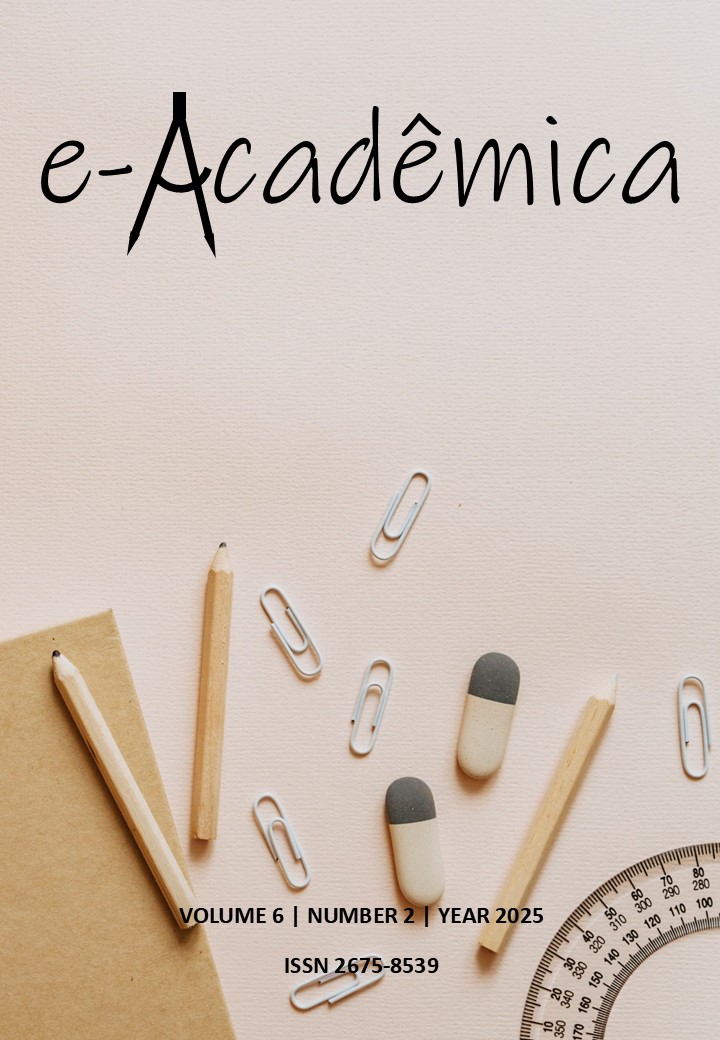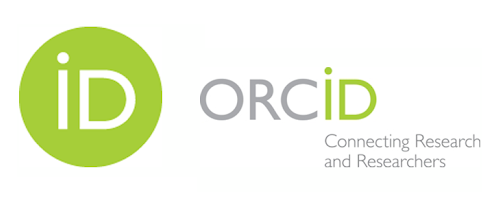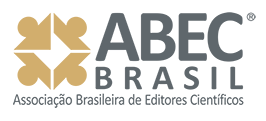Collagen biostimulators: A comparative study between calcium hydroxyapatite x poly-l-lactic acid
DOI:
https://doi.org/10.52076/eacad-v6i2.647Keywords:
Collagen biostimulators; Calcium hydroxyapatite; Poly-l-lactic acid; Skin aging; Dermal fillers.Abstract
Collagen biostimulators emerged to increase collagen production, reduce volume loss, and smooth facial expressions caused by aging. They are injectable, absorbable products compatible with the human body, with the main function of stimulating the production of collagen in the treated area through microspheres. The purpose of this literature review is to provide some guidelines on CaHA and PLLA for facial rejuvenation. A literature review of collagen biostimulators based on Calcium Hydroxyapatite (Radiesseâ) and Poly-l-lactic acid (Sculptra®) was carried out, using the Pubmed, SciELO, Google scholar, Bireme platforms, in English and Portuguese as research bases. Articles from 2006 to 2024 were selected. The objective of this study is to present the efficacy of each one, discuss the techniques, efficacy, mechanisms of action, ideal application sites, contraindications and complications. We conclude that these agents have roles in skin rejuvenation, although they present risks and adverse effects such as hypersensitivity, bruising, pain, nodules and vascular involvement. Even though collagen biostimulators are excellent materials capable of preventing or reversing the effects of facial aging, there is not, however, a perfect dermal biostimulator, as all of them can generate adverse effects, and the professional must know how to select the ideal product for the treatment of each patient.
References
Alijotas-Reig, J., Garcia-Gimenez, V. & Vilardell-Tarres, M. (2009). Late-onset immune-mediated adverse effects after poly-l-lactic acid injection in non-hiv patients: clinical findings and long-term follow-up. Dermatology. 219(4):303-8.
Almeida, A. T., Figueredo, V., Cunha, A. L. G., Casabona, G., Faria, J. R. C., Alves, E. V. et al. (2019). Consensus recommendations for the use of hyperdiluted calcium hydroxyapatite (radiesse) as a face and body biostimulatory agent. Plastic and Reconstructive Surgery - Global Open. 7(3):2160.
Attenello, N. H. & Maas, C. S. (2015). Injectable fillers: review of material and properties. Facial Plast Surg. 31(1):29-34.
Bravo, B. S. F. & Carvalho, R. M. (2020). Safety in immediate reconstitution of poly-l lactic acid for facial biostimulation treatment. Journal of Cosmetic Dermatology. 20(9).
Breithaupt, A. & Fitzgerald, R. (2015). Collagen stimulators: poly-l-lactic acid and calcium hydroxyl apatite. Facial Plast Surg Clin North Am. 23(4):69-459.
Casarin, S. T. et al. (2020). Tipos de revisão de literatura: considerações das editoras do Journal of Nursing and Health. Journal of Nursing and Health. 10 (5). https://periodicos.ufpel.edu.br/index.php/enfermagem/article/view/19924.
Fitzgerald, R., Baixo, L. M., Goldberg, D. J., Graivier, M. H. & Lorenc, Z. P. (2018). Physiochemical characteristics of poly-l-lactic acid (plla). Aesthetic Surgery Journal. 38(1):13-7.
Fitzgerald, R. & Vleggaar, D. (2011). Facial volume restoration of the aging face with poly-l-lactic acid. Dermatovlevegaic Therapy. 24(1):2-27.
Flores, I. C. & González, J. L. M. (2011). Materiales de relleno en dermatologia: dermal fillers in dermatology. Dermatología Cosmética, Médica y Quirúrgica. 9(4):275-83.
Goldie, K., Peeters, W., Alghoul, M., Butterwick, K., Casabona, G., Chao, Y. Y. Y. et al. (2018). Global consensus guidelines for the injection of diluted and hyperdiluted calcium hydroxylapatite for skin tightening. Dermatologic Surgery, Jondon. 44(1):32-41.
Haddad, A., Kadunc, B. V., Guarnieri, C., Noviello, J. S., Cunha, M. G. & Parada, M. B. (2017). Conceitos atuais no uso do ácido poli-l-láctico para rejuvenescimento facial: revisão e aspectos práticos. Surg Cosmet Dermatol. 9(1):60-71.
Haddad, A., Menezes, A., Guarnieri, C., Coimbra, D., Ribeiro, E., Sarubi, J. et al. (2019). Recommendations on the use of injectable poly-l-lactic acid for skin laxity in off-face areas. Journal of Drugs in Dermatology. 18(9):217-223.
Herrmann, J. L., Hoffmann, R. K., Ward, C. E., Schulman, J. M. & Grekin, R. C. (2018). Biochemistry, physiology, and tissue interactions of contemporary biodegradable injectable dermal fillers. Dermatol Surg. 44(1):19-31.
Jacovella PF. Calcium hydroxylapatite facial filler (radiesse): indications, technique, and results. Clin Plastic Surg. 2006 Out;33(4):511-523.
Lacombe, V. (2009). Sculptra: a stimulatory filler. Facial Plast Surg. 25(2):9-95.
Lima, N. B. & Soares, M. L. (2020). Utilização dos bioestimuladores de colágeno na harmonização orofacial. Clinical and Laboratorial Research in Dentistry. 1(1):1-18.
Liu, M. H., Beynet, D. P. & Gharavi, N. M. (2020). Overview of deep dermal fillers. Facial Plast Surg. 35(3):224-9.
Loghem, J. V., Yutskovskaya, Y. A. & Werschler, W. M. P. (2015). Calcium hydroxylapatite: over a decade of clinical experience. The Journal of Clinical and Aesthetic Dermatology. 8(1):38-49.
Lorenc, Z. P., Baixo, L. M., Fitzgerald, R., Goldberg, D. J. & Graivier, M. H. (2019). Physiochemical characteristics of calcium hydroxylapatite (caha). Aesthetic Surgery Journal. 38(1):8-12.
Lowe, N. J. (2008). Optimizing poli-l-lactic acid use. Journal Cosmectic Laser Therapy. 10(1):43-6.
Nikolis, A,, Avelar, L. E. & Enright, K. M. (2021). Evaluation of cannula safety in injection of poly-l-lactic acid. Clinical, Cosmetic and Investigational Dermatology. 14(1):615-22.
Pereira A. S. et al. (2018). Metodologia da pesquisa científica. [free e-book]. Santa Maria/RS. Ed. UAB/NTE/UFSM.
Rayess, H. M., Svider, P. F., Hanba, C., Patel, V. S., DeJoseph, L. M., Carron, M. et al. (2018). A cross-sectional analysis of adverse events and litigation for injectable fillers. Jama Facial Plastic Surgery. 20(3):207-14.
Rother, E. T. (2007). Revisão sistemática x revisão narrativa. Acta Paul. Enferm. 20 (2). https://doi.org/10.1590/S0103-21002007000200001.
Saragoça, A. B. O., Felix, G. S., Castro, I. L. & Silva, T. B. F. (2023). Bioestimuladores de colágeno (ácido polilático, hidroxiapatita de cálcio, policaprolactona e polidioxanona). Revista Recima21. 4(1).
Schierle, C. F. & Casas, L. A. (2011). Nonsurgical rejuvenation of the aging face with injectable poly-l-lactic acid for restoration of soft tissue volume. Aesthetic Surgery Journal. 31(1):95-109.
Snyder, H. (2019). Literature review as a research methodology: An overview and guidelines. Journal of business research, 104, 333-339.
Sundaram, H., Voigts, B., Beer, K. & Meland, M. (2010). Comparison of the rheological properties of viscosity and elasticity in two categories of soft tissue fillers: calcium hydroxylapatite and hyaluronic acid. Dermatol Surg. 36(3):1859-65.
Downloads
Published
How to Cite
Issue
Section
License
Copyright (c) 2025 Ariane Piculi Honda; Roger Kirschner; Pierangelo Angeletti

This work is licensed under a Creative Commons Attribution 4.0 International License.
Autores que publicam nesta revista concordam com os seguintes termos:
1) Autores mantém os direitos autorais e concedem à revista o direito de primeira publicação, com o trabalho simultaneamente licenciado sob a Licença Creative Commons Attribution que permite o compartilhamento do trabalho com reconhecimento da autoria e publicação inicial nesta revista.
2) Autores têm autorização para assumir contratos adicionais separadamente, para distribuição não-exclusiva da versão do trabalho publicada nesta revista (ex.: publicar em repositório institucional ou como capítulo de livro), com reconhecimento de autoria e publicação inicial nesta revista.
3) Autores têm permissão e são estimulados a publicar e distribuir seu trabalho online (ex.: em repositórios institucionais ou na sua página pessoal) a qualquer ponto antes ou durante o processo editorial, já que isso pode gerar alterações produtivas, bem como aumentar o impacto e a citação do trabalho publicado.










